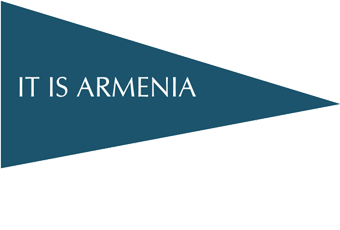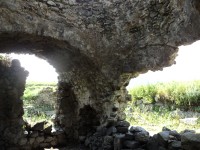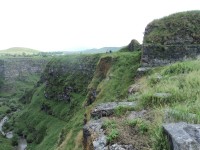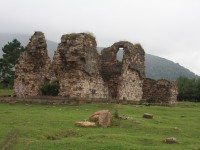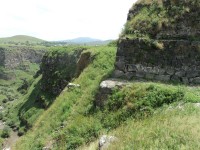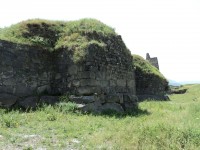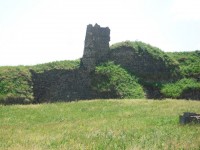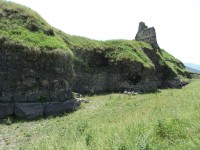Lori Berd Fortress
The Lori Berd fortress is located in the Marz (region) of Lori, about 5 km to the north-east of the city of Stephanavan, on the left bank of the river of Dzoraget. It is 164 km far from the city of Yerevan. The fortress was built at the beginning of the 11th century by the Kyurikyan king of Lori Davit I Anhoghin (Lackland). A short time after its foundation Lori became the capital city of the Kyurikyan kingdom. Lori was a large commercial and industrial center of medieval Armenia, as it was located on the northern trade road. Whit trade roads it was connected with Ani, Dvin, Dmanisi, Tpghis and many other cities. In the 11th-13th centuries Lori had a population of more than 10 thousand residents. In 1105 Lori was captured by the Seljuk’s for a short time, in 1118 - by the Georgian forces and Lori with its surrounding lands turned into a manor of Georgian Olbelis’. In 1185 Lori passed to Sarkis Zakharyan, and after his death – to his sons Ivane and Zakhare Zakharyans. In 1236 the Mongolian army led by military leader Chagat Nuin captured Lori and razed it to the ground, robbed the treasures of the Shahinshah Zakharyan, destroyed the chapel-tomb ascribed to the wife of David Anhoghin (Lackland). Since 1430 the city was reigned by the Orbelyans. 1561-1734 Lori, as an important defensive fortress, consecutively passed to the Turks, to the Persians, sometimes to the Georgians. The Lori fortress covers an area of 35 hectares. It is widely stretched like a cape, on a plateau at the height 1490m above sea level, between the rivers of Dzoraget and Miskhana, deep gorges of which turned Lori into an impregnable fortress on its three sides. From the north-west, relatively affordable side of the fortress was stretched fence with the length of 214 m, with round and square towers, in the north-western corner of which is located the only arched entrance to the fortress. The width of the fence in some places reached up to 20 m, the height - 20-25 m. Along the length of the fence was dug the pothole of water. The Kyurikyans, and after them the Zakharyans and their successors built in Lori palaces, churches, baths, bridges in the gorges, which separated the outskirts from the city, erected khachkars (cross-stones). An underground passage was also built that reached to the river of Miskhana and ended with the tower-shaped building. Underpass was used for keeping in touch with the outside world and for the acquisition of drinking water, if necessary.






